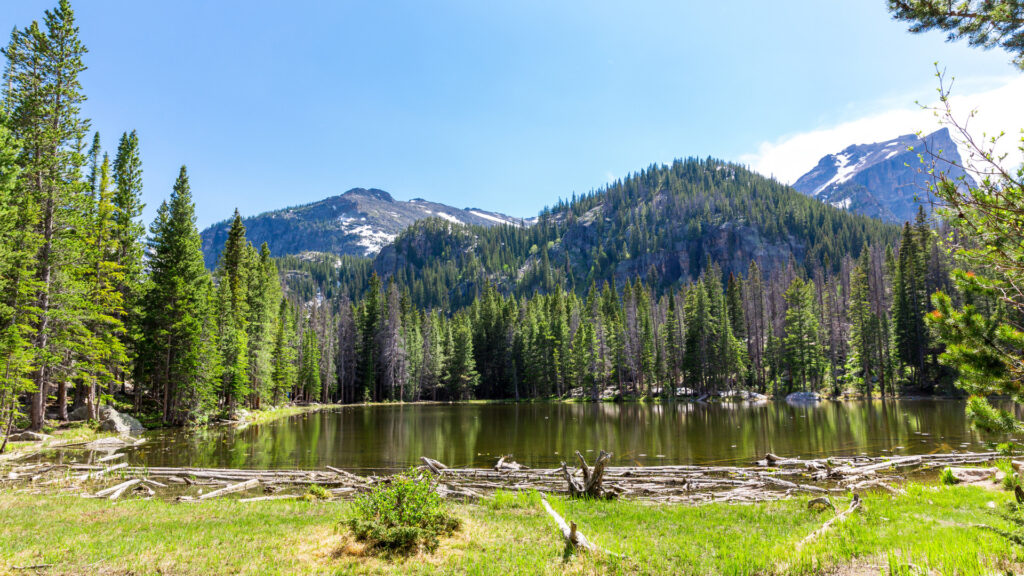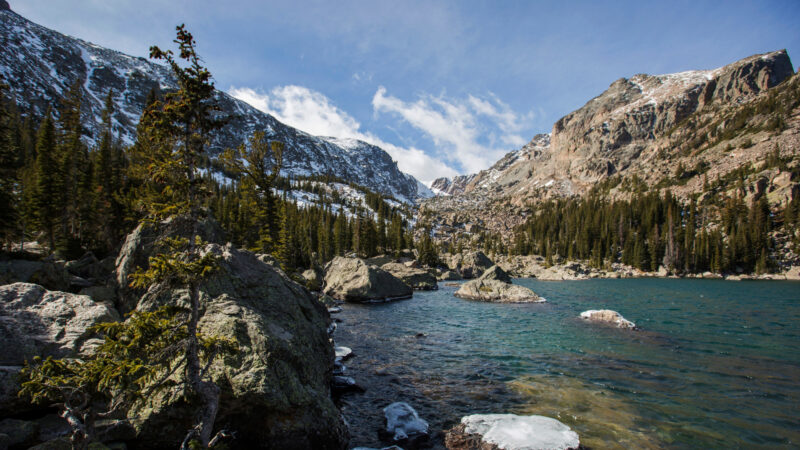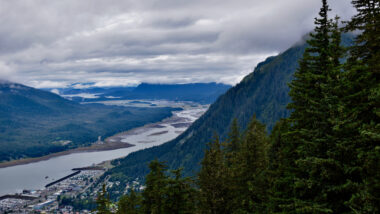Table of Contents Show
If you have yet to visit Rocky Mountain National Park and see the wildlife, add it to your to-do list. It not only offers opportunities to see wild animals but also amazing scenery and hundreds of miles of trails.
Today, we’re going to give you a quick run-down on Rocky Mountain National Park wildlife so you can stay safe during your visit while capturing those epic moments.
Let’s dive in!
Where Is Rocky Mountain National Park?
Rocky Mountain National Park covers over 265,000 acres in north-central Colorado. It sits west of I-25, a north-south highway that runs from Wyoming through Colorado and into New Mexico.
Estes Park is considered the gateway to the park. You’ll find plenty of shopping, dining, lodging, and outdoor recreation here.
Denver sits about 90 minutes southeast of the national park, while Cheyenne lies just under two hours northeast. Visitors from both cities will access Rocky Mountain National Park from its east side through Estes Park.
The west side is more remote and rugged. Granby is the gateway town on that side. It’s about 20 to 25 minutes from the park’s west entrance.
About Rocky Mountain National Park
The Rocky Mountains stretch from western Canada to New Mexico. It’s the largest mountain range in North America at 3,000 miles. Colorado has over 75% of the tallest peaks in the Rockies.
Rocky Mountain National Park sits in the Front Range of these mountains. The Continental Divide runs directly through the center of this national park. But this park isn’t known only for its tall mountain peaks. Visitors also love the alpine lakes, 300 miles of hiking trails, and abundant wildlife. Numerous landscapes exist here, from alpine tundra to forested valleys.

Is Rocky Mountain National Park a Good Place to View Wildlife?
Because of its diverse landscapes, Rocky Mountain National Park has all kinds of wildlife. It’s one of the best national parks for nature enthusiasts who want to see as many animals as possible. If you’re from the eastern or southwestern United States., Rocky Mountain National Park wildlife is probably unlike anything you’ve seen.
You also don’t have to hike into the national park to witness this diversity. Although hiking or paddling certainly gets you closer to habitats, Rocky Mountain is a very accessible national park.
You can drive the roads, stop at the overlooks, and view the majestic elk, bighorn sheep, or moose. Wildlife viewing is the top-rated attraction by visitors to Rocky Mountain National Park.
What Rocky Mountain National Park Wildlife Can I See?
Large mammals live in Rocky Mountain National Park. There are 600-800 elk and about 350 bighorn sheep. You’ll also see mule deer, marmots, and beavers. Black bears live in the park but avoid humans, so they often remain hidden in the wilderness. A small population of moose also live in Rocky Mountain National Park.
Fish are abundant because of the numerous bodies of water in the park. There are seven native fish and four exotic fish. When fish stocking began in the mid-1880s, the non-native fish almost wiped out the native fish. As a result, hatcheries changed their methods in 1968 and began reintroducing native fish species.
Threatened and endangered species are protected in Rocky Mountain National Park, including the Canada lynx, Mexican spotted owl, greenback cutthroat trout, and North American wolverine, among others.
Tips for Viewing Rocky Mountain National Park Wildlife
If you go to Rocky Mountain National Park to view the wildlife, you’re heading to the right place. But here are some tips to make the most of your experience and a few places to visit to check off those “big” animals on your wildlife list.
Look for Elk in the Meadows
Elk are probably the easiest Rocky Mountain National Park wildlife to see. They’re everywhere! But the best places to spot them are in the meadows and where the fields meet the forests. In the summer, they’ll move to higher elevations in the park, but they’ll be munching grass here during the rest of the year.
Keep in Mind: Did you know Colorado has castles? You can even visit them too!

Visit Sheep Lakes in the Summer
Bighorn sheep are another must-see animal in the Rockies. Head to the Fall River Entrance, where ancient glaciers carved this beautiful meadow — sheep frequent this area to drink from the lakes from May to August. You’ll likely see coyotes and elk here, too.

Visit the Kawuneeche Valley For A Moose Sighting
Moose aren’t found all over Rocky Mountain National Park like elk or mule deer. Although they live here, it’s a small population.
But the best chance of seeing a moose is at the Kawuneeche Valley at dawk or dusk. There are numerous hiking trails here, so arrive early and enjoy the day on the park’s western side.
Drive Slowly at Dawn and Dusk
Rocky Mountain National Park wildlife is most active at dawn and dusk. Pay attention and drive slowly when visiting during these hours. You might have to stop for a bighorn sheep crossing.
These times are also prime opportunities for wildlife photography since the lighting is best. Visitors will pull over on the side of the road to try and capture their Instagram-worthy pictures.
Bring Binoculars
Finally, don’t forget your binoculars! Even with excellent overlooks and pull-offs in perfect locations, Rocky Mountain National Park wildlife may still be a ways off.
Elk could be grazing, moose could be drinking water, or bighorn sheep could be climbing 300 yards or more away. Spotting a bighorn sheep on a hill with binoculars will be much easier than with your bare eyes.

How Far Should I Stay Away From Wildlife in Rocky Mountain National Park?
The National Park Service has issued warnings about getting too close to wildlife. No matter what park you’re visiting, keep your distance to protect yourself and the animals.
You should always stay at least 75 feet away from all wildlife. If you see black bears, moose, or mountain lions, remain at least 120 feet away.
Keep in Mind: If you’re an animal lover, then you have to add this Wolf Sanctuary in PA to Your Bucket List!
Should I Hike in Groups at Rocky Mountain National Park?
You should never hike alone. But in Rocky Mountain National Park, it’s even more important to hike in groups so that wildlife hear noises and stay away. Chatting along the trails alerts wildlife to your presence so the animals don’t get spooked.
However, don’t get a false sense of security. Just because you’re with ten people doesn’t mean you can get closer to wildlife. Maintain your distance so animals don’t feel trapped or threatened. That perfect selfie isn’t worth it.
Keep Your Distance While Enjoying Rocky Mountain National Park Wildlife
Rocky Mountain National Park is one of the most-visited parks in the United States. Each year, four to five million people head to this stunning Colorado park. It’s a hiker’s paradise. But it’s also great for people who can’t get out on trails.
The scenic drives allow everyone to view the wildlife and spectacular scenery. But it’s important to stay safe during your visit. Make those memories, but do so responsibly.
What animal are you most looking forward to seeing on your trip to the Rockies?






